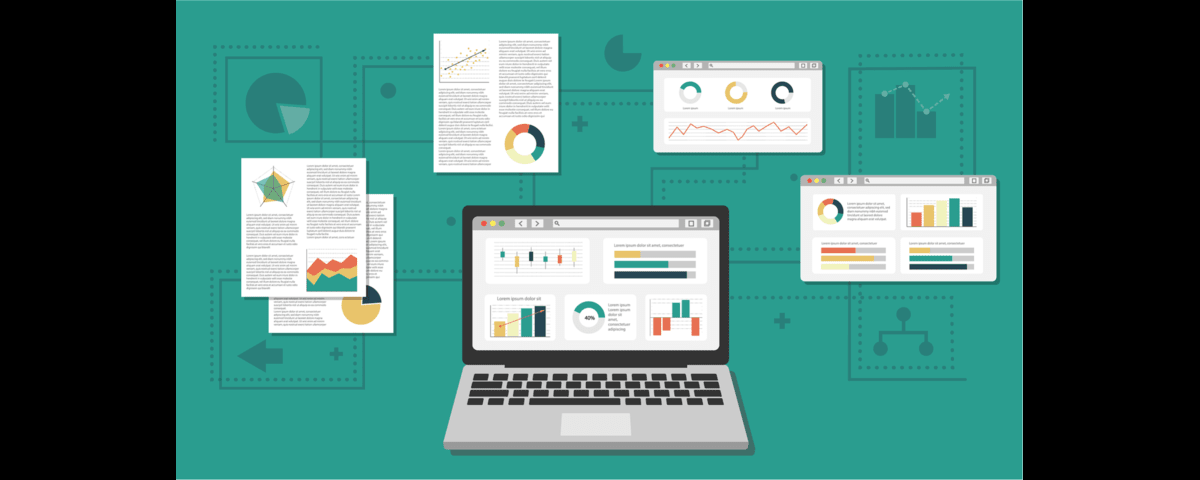Finding the ideal mix is a science, and an art in the increasingly specialized field of digital marketing. Therefore, Digital marketing KPIs are essential for assisting you in creating the best possible tactics.
A subset of marketing known as “digital marketing” is the use of digital platforms, and channels to advertise goods, and services to prospective clients.
Firstly, Targeting particular audiences, and turning them into consumers is the ultimate goal. Even if it looks simple enough, digital marketing is made up of many different elements.
The range is wide and includes techniques centered on websites, search engines, email, and social media. Nevertheless, some organizations are better off using some digital marketing methods than others, and vice versa.
So let’s get started on some of the things to measure for any of your campaign
What Is a KPI?
KPI is an acronym for Key Performance Indicator. Though they can take many different forms, it has measurable values that determine how close you are to reaching your particular goal.
Depending on the particular industry and objective, an organization’s choice of KPI will differ significantly. The KPIs you might select, and use to monitor the performance of a customer care team or to track operational goals, for instance, will differ significantly from those of a sales team.
Get 50% Discount to Master ALL Aspects of Digital Marketing That Can Earn You $2,500 - $5,000 a month (Even if you are a complete beginner!)
Our students that intentionally implement what they learn from our digital marketing course make back the entire course fee within a single month or more after completing our course because our course gives them many income generating options with unlimited earning potential with no age or location barrier. The best part is no technical skills are required.
An opportunity to change your lifestyle and make money working from anywhere in the world. The results our students get from our digital marketing course prove this could be applied to any market or country and that it is designed for any skill level and work background.
*By signing up, you agree to our privacy policy and terms of service.
Making decisions about an organization’s areas of strength, or the efficacy of a recently implemented strategy is made much easier when the appropriate KPIs are used extensively.
What are Digital Marketing KPIs?
Digital Marketing KPIs are quantifiable goals that assist in monitoring and measuring progress. KPIs are used by the digital marketing industry to assess each campaign’s, or effort’s effectiveness. Among the most popular important metrics in digital marketing are:
- Website traffic
- Engagement rates
- Social media reach
- Click-through rates
- Bounce rates
- Keyword ranking
- Average session duration
- Conversion rates
- Cost per lead
There are many different digital marketing KPIs available, but you need to take your time and choose the ones that will best fit your overall goals for digital marketing. Similarly, you ought to utilize the data gathered from monitoring these KPIs, in order to modify your present tactics as necessary.
For instance, if website traffic is declining, it might be worthwhile to spend more money on an improved Search Engine Optimization (SEO) plan. Once these adjustments are made, you may reassess the KPIs to determine whether the increased website traffic is a result of the new SEO techniques. Regardless the result, you can modify your objectives and key performance indicators.
Why You Need to Track Your Marketing KPIs
Tracking important digital marketing metrics gives businesses extremely useful information about how well their investments or plans are working. This facilitates decision-making and makes it possible for project managers, to assess if the cost is justified.
Also, to increase website traffic, for example, business owners could spend a lot of effort and money. They can decide to combine conventional SEO services with a Pay-Per-Click (PPC) strategy.
Through the use of KPIs to monitor the campaigns’ respective advancement, owners can determine which of the two is better. It’s possible that valuable blog entries using organic keywords convert readers, and are better than PPC ads. The owners would probably decide to switch from PPC to more profitable SEO services after receiving this review.
Business owners would probably keep spending money on PPC advertising without much to no return on investment (ROI). This happens if digital marketing KPIs aren’t in place.
Therefore, To put it simply, monitoring your KPIs, gives decision-makers the information they require to choose the best course of action for their companies. This knowledge is essential for success in the digital age since not all firms, and industries are the same, and everyone requires a different approach to digital marketing.
How to Choose the Right KPIs to Track
Digital marketing is a multifaceted word that includes multiple channels. All of these channels from social media and sales to email marketing, paid advertising, and SEO are crucial to developing a successful digital marketing plan. The components differ greatly, despite their shared significance, therefore KPIs ought to be channel-specific.
Therefore, While a KPI such as keyword ranking is essential for search engine optimization, other channels such as email marketing, or end-of-funnel sales would not benefit as much from this information.
Alternatively, you might find it useful to concentrate on conversion rates; however, the decision you make here ultimately comes down to the objectives you have for your company. Setting quantifiable goals for each channel is the first step in creating channel-specific KPIs. Next, decide which metrics will be most useful, applicable, and related to these goals.
You can learn about various aspects of digital marketing skills to know the type of metric to measure.
17 Digital Marketing KPIs and metric To Track
While your business, and the channels you target with your digital marketing efforts will determine the exact combination of KPIs you track, most online businesses fall into several categories. These consist of:
Most businesses will find it useful to have certain generic marketing measurements, and KPIs and these are listed below.
General Marketing KPIs
Customer Acquisition Cost
The amount you must pay to acquire a new client is known as the acquisition cost. Any advertising, sales calls or visits, and other activities related to your prospecting, and conversion process may fall under this category.
Return on Investment (ROI)
ROI is when you compare your revenue generated to your cost of customer acquisition, it indicates how much profit you make.
As a data-savvy marketer, You will be aware of the significance of monitoring the return on investment for each, and every one of your projects or activities. The ROI on your digital marketing determines how well you use the money you have allocated to a given campaign. Through a thorough analysis of this comprehensive metric, you will be able to determine whether your investments are producing noticeable returns.
In this instance, a higher ROI is preferable. An impressive ROI indicates that your campaign expenditures are working. In the event that your ROI turns out to be low, you’ll be able to identify your weakest points and make the necessary adjustments.
You can check for more details on How to generate leads to increase your ROI.
Conversion Rate
Conversion rates are somewhat difficult to understand. First of all, it’s important to realize that this statistic can monitor both the proportion of visitors who convert to leads and the proportion of leads who become paying customers.
This KPI can be monitored in several ways. Measure percentages for each of your channels to determine the total conversion rates, or go deeper, and measure rates for specific campaigns like email marketing, or social media platforms.
If you wish to measure each channel independently, you can use this basic marketing KPI for any of the other categories. Another option is to monitor the overall quantity of leads or conversions.
Search Engine Optimization (SEO) KPIs
Organic Search Traffic
Search traffic metrics encompass a range of KPIs about the amount of traffic originating from Google, and other search engines, such as total visits, unique visitors, organic traffic, website visitors, traffic sources, page views per session, and top pages.
Keyword Rankings
You may find out where your website stands for your most valuable keywords, and phrases with this KPI. You can monitor changes in ranking over time to see which aspects of your SEO activities are effective, and ineffective.
Backlinks
An essential component of search engine optimization is backlinks. When paired with the search traffic KPIs, this KPI allows you to monitor the number of other websites connecting to yours, and the impact those links have on your traffic and rankings.
Bounce Rate
A bounce occurs when a visitor lands on one of your website’s pages, and clicks away right away. You may enhance your landing pages, to encourage users to stay on your website longer by keeping an eye on this KPI.
Social Media KPIs
Follower Growth Rate
To produce new leads and consumers, you require a constant flow of new followers. This KPI will gauge the growth rate during a certain period.
Engagement rate
Social media sites are driven by likes, comments, and shares. You can use these KPIs to determine how much exposure you’re receiving on social media platforms if that’s one of the channels you’re targeting.
Social Media Conversions
This works like social media traffic, it helps in tracking overall conversions as well as each channel’s results. Social media conversions are important metrics for businesses looking to turn their social media followers into loyal customers and drive sales and revenue growth.
Paid Search Marketing KPIs
Cost-per-Click (CPC)
CPC is one of the essential KPIs you should be monitoring if you use paid advertising.
CPC is a useful KPI for digital marketing. It provides a transparent price structure that will enable you to run your ads as profitably, and efficiently as possible.
You may use this KPI to see how much you typically spend on pay-per-click (PPC), display advertising, and re-targeting, among other paid marketing initiatives.
Increasing your CPC gradually over time will lead to more economical, effective, and efficient campaign operations.
Two more KPIs in this domain that you ought to monitor are as follows:
- Cost per acquisition (CPA)
- Customer lifetime value (CLTV)
Click-Through Rate (CTR)
Another essential KPI to monitor while you’re paying for traffic is CTR. In certain ad networks, having a higher CTR might help you reduce your CPC in addition to increasing traffic.
Quality Score
Finally, Your ad’s quality score is one of the elements the ad networks take into account, and this is done when calculating your CPC. Note, that lower CPCs are often the outcome of a more relevant ad receiving a higher quality score and a better CTR.
Email Marketing KPIs
Open Rate
The percentage of recipients on your email list who open your emails is known as the open rate. This KPI is a fantastic way to gauge the effectiveness of your subject lines.
Click-Through Rate (CTR)
Email engagement can be measured by tracking the number of clicks on links that point to pages on your website, goods or services, or anything else.
Bounce Rate
The bounce rate of emails differs from that of websites. When an email is not delivered, it “bounces” back to the sender. Therefore, an email bounce is an undelivered email.
Unsubscribes
There is probably an unsubscribe link in every email you send to your consumers, allowing them to take themselves off of your list. With the help of this KPI, you may monitor the quantity of unsubscribes to determine what kinds of messages are most successful, and which ones cause the most unsubscribes.
How to Choose the Right KPIs to Track
Choosing the right key performance indicators (KPIs) is crucial for businesses to track their progress and achieve their goals. To choose the right KPIs, businesses should ensure that they are measurable, actionable, and aligned with their overall objectives.
It’s important to focus on a few key metrics rather than tracking too many, which can lead to data overload and loss of focus. Businesses should also consider the quality of the KPIs, ensuring that they are easily quantifiable, within their control, and relevant to their objectives.
What Not to Track
When it comes to tracking KPIs, it’s important to avoid certain practices that can lead to irrelevant or misleading data. For instance, businesses should avoid tracking KPIs that are too easy to manipulate, as this can lead to people artificially inflating their performance.
Additionally, businesses should avoid tracking KPIs that measure the effect of business activities but ignore the cause, as this can lead to a lack of understanding of why certain metrics are performing well or poorly. Furthermore, tracking too many KPIs can lead to data overload and make it difficult to focus on what matters most.
To avoid these pitfalls, businesses should focus on KPIs that are measurable, actionable, and aligned with their overall objectives. They should also regularly review and update their KPIs to ensure they remain relevant and useful.
FAQs
What should digital marketing KPIs be aligned with?
KPIs are essential to the success of digital marketing, and this is because they provide quantifiable values, that can be applied to important promotional goals.
For instance, among other things, you can align your digital marketing KPIs on customer lifetime value, conversion rates, and ROI.
By tracking your digital marketing activities with KPIs, you’ll offer your data direction, enabling you to identify the metrics that will most benefit your efforts, and eliminate any that are unnecessary.
What is ROI and KPI in digital marketing?
In the context of digital marketing, KPI and ROI stand for Key Performance Indicator and Return on Investment, respectively. In digital marketing, “KPIs” refers to the marketing measures used to assess the effectiveness of a campaign.
Digital marketing is not understood by upper management. However, it’s critical to use KPIs like return on investment, cost per lead, cost of acquisition, and client lifetime value. Lower-level management uses these KPIs to convey the success of marketing initiatives to upper-level management in an understandable format.
In digital marketing, ROI is a KPI that shows how much money was invested, and how much was profited. You cannot decide which marketing channels need more, and less funding if you do not know how much money you are making. Above all, you will be unable to explain to higher-ups how successful your digital marketing campaign was.
How do you track ROI in digital marketing?
This is very straightforward. You take the sales growth from that business or product line, subtract the marketing costs, and then divide it by the marketing cost.
Is ROI a metric or a KPI?
In digital marketing, ROI, a key performance indicator (KPI), illustrates the investment made and the profit gained. You cannot decide which marketing channels need more, and less funding if you do not know how much money you are making.
Conclusion
Considering all the marketing metrics you might be able to monitor can be very daunting. Just keep in mind to focus your attention by considering, the indicators that help with company decisions. Reconsider monitoring social media metrics if they haven’t worked for your business; instead, focus on those of more successful media. Most importantly, make sure the measurements you monitor match your KPIs!










